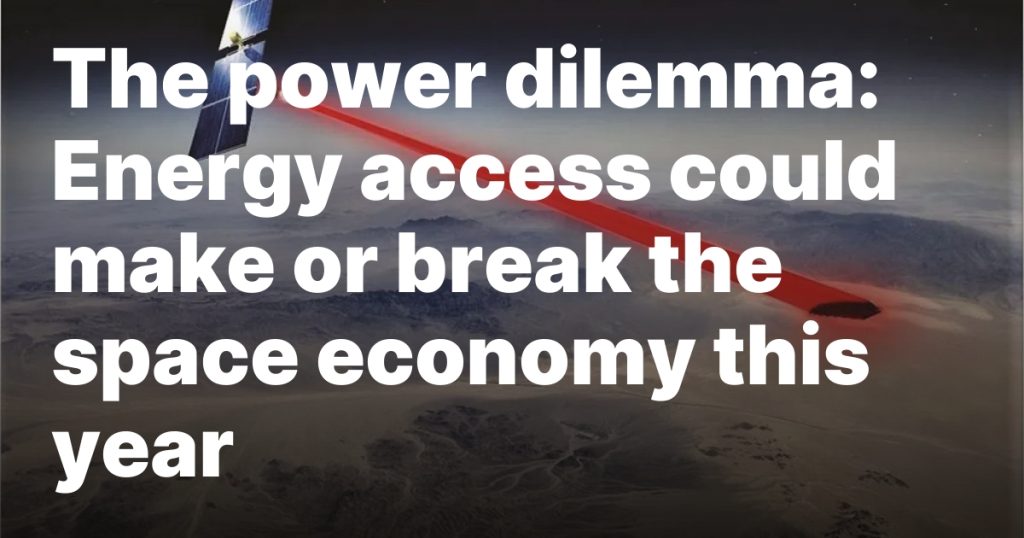The commercialization of space is poised to be one of the most transformative yet challenging arenas for innovation this decade. Terrestrial industries such as telecommunications, defense, agriculture, and now AI, are rapidly pushing into the frontier of space. And, in order to flourish, these space missions will require immense power.
Similar to batteries for electric vehicles here on earth, power in space is critical enabling infrastructure — nothing happens without it. Typically, space power is provided by solar arrays, but these have historically been incredibly expensive and represent a significant portion of a satellite’s cost. This makes sense, given that developing solar arrays for space is no easy feat. They need to provide reliable power under punishing conditions — dramatic temperature swings on each 90-minute orbit around the earth and intense radiation exposure — for decade-long missions. But with launch costs dropping rapidly, power solutions for space are going to have to be more cost effective, reliable and scalable than they ever have before.
If we don’t get this right, our space ambitions could fall apart. Large-scale space missions will not be able to stay economically viable. The ultimate goal of the commercialization of space is to create a sustainable space economy that transcends defense and government contracts. Satellites, lunar mining, AI applications and power beaming can all be vital pillars of this economy, but success hinges on access to power technologies that are scalable, affordable, and reliable.
The energy boom: AI, LEO networks and the lunar economy
Low-Earth orbit (LEO) constellations for applications such as telecommunications, defense and Earth observation are here and now and present the largest need for space power today. Companies like Starlink and OneWeb are leading the charge with massive telecommunications satellite constellations, driving other players such as Telesat Lightspeed, Globalstar/Apple, AST & Science, IRIS2 and Lynk Global to move aggressively. All these programs require cost-effective, scalable and high-performance space power to make their constellation networks economically viable.
Meanwhile, the need for robust and cost-effective energy infrastructure only continues to grow across other new applications. Ambitions to develop a lunar economy represent the next great phase of space commercialization. Everything planned for the moon — mining, manufacturing and permanent habitats — will require significant amounts of power. NASA’s Project Artemis, though delayed, reflects the growing urgency of lunar exploration, spurred by competition with China and other nations. In addition, commercial companies, such as SpaceX, are developing lunar landers and services to support exploration and resource utilization. As lunar missions advance, power solutions will need to scale as well, offering low-cost, high-performance systems capable of sustaining operations in one of the harshest environments imaginable. Mining and in-situ resource utilization will be pivotal, but none of it happens without robust power solutions.
AI-powered data processing has also become indispensable for defense and commercial operations, supporting real-time decision-making, image analysis, and autonomous systems. Data centers in space, powered by AI, will require enormous amounts of power. AI is enhancing humanity’s ability to commercialize space, uncovering new insights and more ambitious missions. Innovative new power systems that are scalable and economical will be critical to advancing AI in space, ensuring that intelligence, not power limitations, drives the next wave of innovation.
Beaming energy across space: a solution for Earth’s power challenges?
Space-based power isn’t just needed for enabling the next wave of space missions — it could also redefine how energy is generated and consumed here on Earth. By harnessing the virtually unlimited solar energy available in space, power beaming offers a path to clean, consistent energy that bypasses the challenges of Earth-bound generation, like weather-dependent renewables or aging grid infrastructure.
This innovation could send energy directly from space to remote areas, disaster zones or regions with unreliable access to electricity. As global energy demand rises, power beaming has the potential to supplement Earth-based resources, delivering renewable energy at scale without the land use, transmission loss or storage challenges we face today. But without cost-effective, scalable technology that can actually survive in space for this — we may never benefit from its enormous potential.
Industry-wide collaboration on power isn’t optional — it’s the future of space commercialization
To make this future a reality, we must align our efforts and prioritize strategic investments in the technologies and systems that will power the next era of space exploration and commercialization.
This means investing in and supporting photovoltaic (PV) manufacturing ventures in the U.S. to ensure a reliable domestic supply of this strategic energy asset. It also requires closely monitoring new, higher-efficiency terrestrial silicon technologies, such as perovskites on silicon, for their potential use in space applications. Finally, we also need to rethink solar design and embrace efficiency tradeoffs—oversizing arrays to ensure end-of-life performance—made possible by the decreasing cost of launch. Together, these steps will be crucial to turning our ambitions, and the significant reliance they have on space power, into reality.
We need to build the foundation for a space economy that supports life and enterprise far beyond Earth’s orbit. The future of space power isn’t just about solving technical challenges — it’s about taking concrete steps today to ensure the next wave of space exploration and commercialization can thrive.
Kevin Hell is the CEO and president of mPower, a solar cell technology developer.
SpaceNews is committed to publishing our community’s diverse perspectives. Whether you’re an academic, executive, engineer or even just a concerned citizen of the cosmos, send your arguments and viewpoints to opinion@spacenews.com to be considered for publication online or in our next magazine. The perspectives shared in these op-eds are solely those of the authors.








